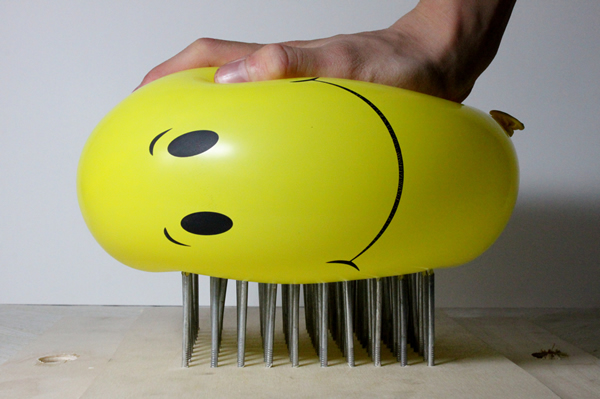- The act of suspending
- The state of being suspended
- Something on or by which something else is hung
Origin: Early 15th century, "a temporary halting or deprivation," from Latin suspensionem (nominative suspensio) "the act or state of hanging up, a vaulting," noun of action, from past participle stem of suspendere "to hang up, cause to hang, suspend".
Meaning "action of hanging by a support from above" is attested from 1540s. Meaning "particles suspended in liquid without dissolving" is from 1707. Suspension-bridge first recorded 1819 (earlier suspended bridge, 1796).
When looking up "Suspension" on Wikipedia, the act of hanging a human body from hooks is listed under 'Eroticism'.
What an interesting act. There are many different ways to suspend the body, and I wonder which is the least painful of the acts. One thing to consider is the physics of the situation: more hooks would allow the weight to be dispersed over a larger area, leaving the pressure on each given hook to be very little.
 |
| Does this guy feel little pain due to the dispersion of weight? |
There have been bus advertisements circulating recently which ask the viewer, "Can you lay on a bed of 3500 nails?" To the average person, this may seem intimidatingly painful, but a physicist could see that by dispersion of weight, the average pressure would be very little, probably not even enough to cause discomfort. Lying on a bed of 100 nails, now THAT would be impressive.
 |
| Even a balloon won't pop on a bed of nails. |
Similarly, dispersion of weight might mean that hanging from many hooks might hurt less than hanging from few. Suspension bridges work off of this dispersion of weight method. The weight from the roadway is carried by many small cables up to the main cables, which are connected to large vertical towers that carry the weight by compression down to the ground. This allows them to carry a large amount of weight and is able to span long distances. For this reason, suspension bridges are considered one of the strongest types of bridges.
 |
| The physics of the Golden Gate Bridge, a notable suspension bridge. |
So let's apply this to body suspension. I weigh approximately 110 pounds and am 62 inches tall. Guessing that I'm 55 inches to the shoulder, putting a hook on the left and right side of my body every inch from my shoulder to my feet would be about 110 hooks, putting a pound of weight on each hook. This would end up giving about one pound per square inch (PSI), which is not a lot, considering that normal human blood pressure is more than twice that. Comparatively, what if I did it the Oh-Kee-Pa method and hung from only two hooks?
 |
| Oh-Kee-Pa Ritual Ceremony |
This would mean I'd have about 55 pounds resting on each hook, or 55 PSI. That's about the air pressure in a bike tire or a water hose. While this doesn't sound too bad, having all that weight on hooks could stretch out the skin quite a bit.
No comments:
Post a Comment